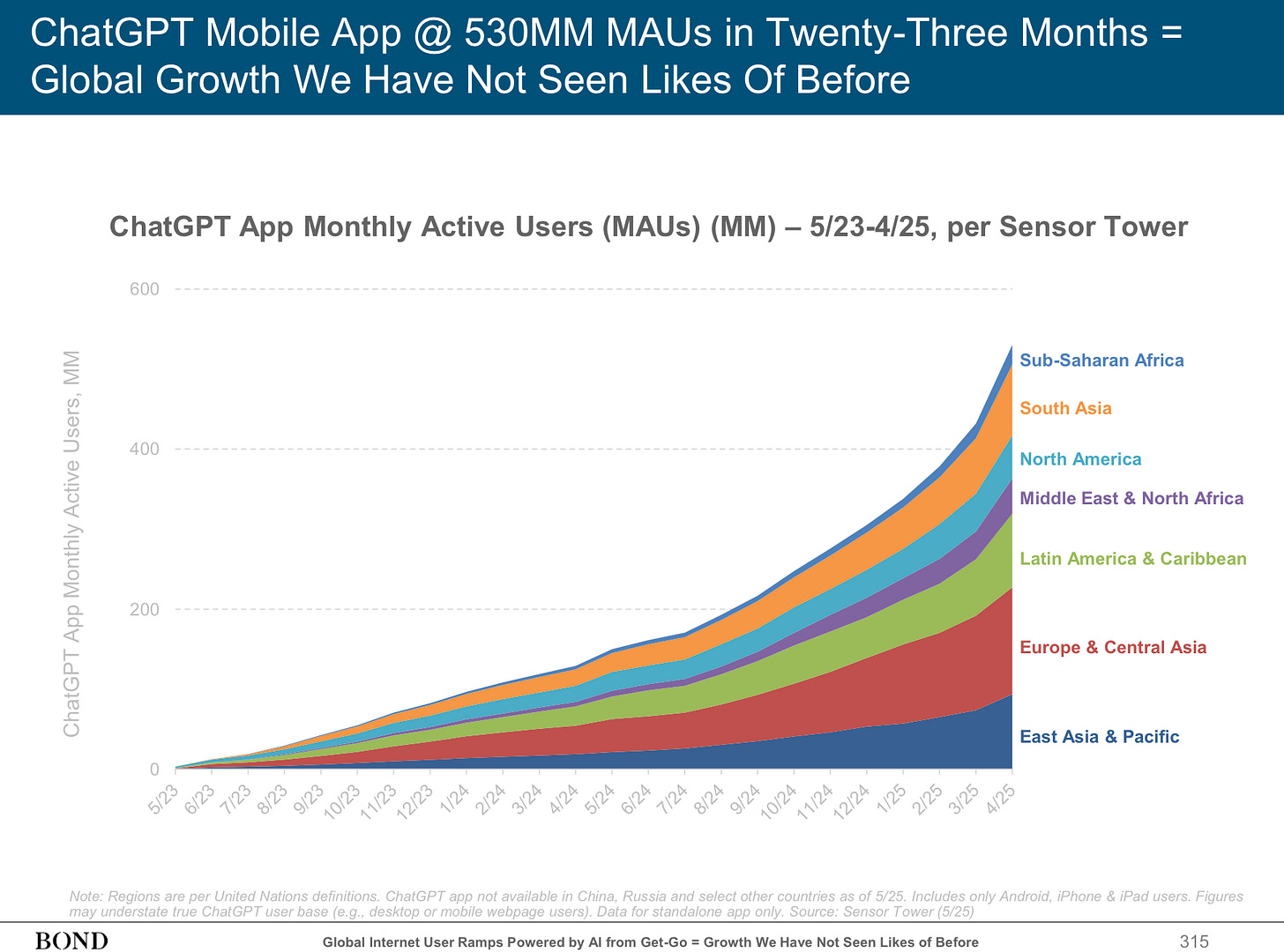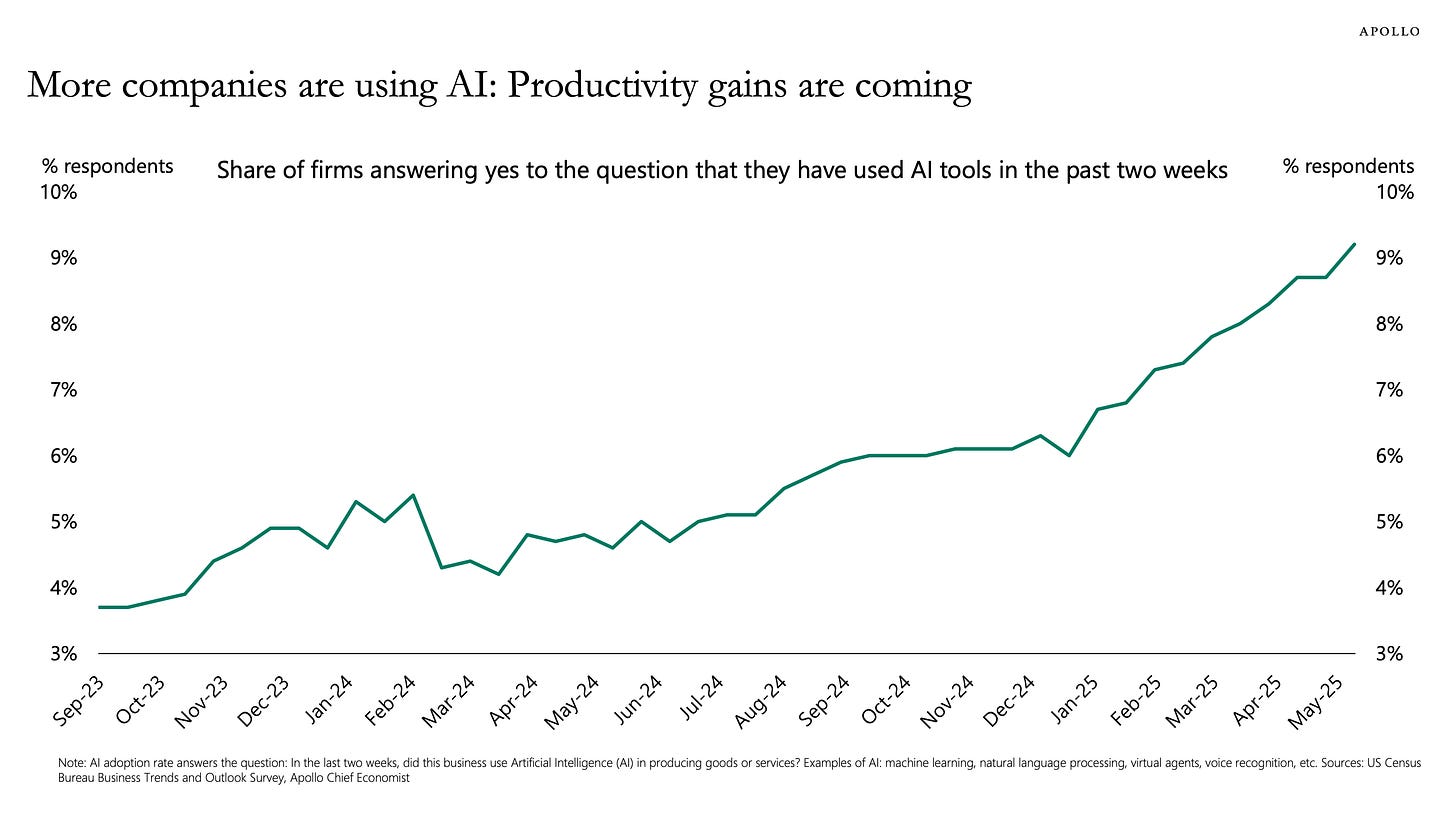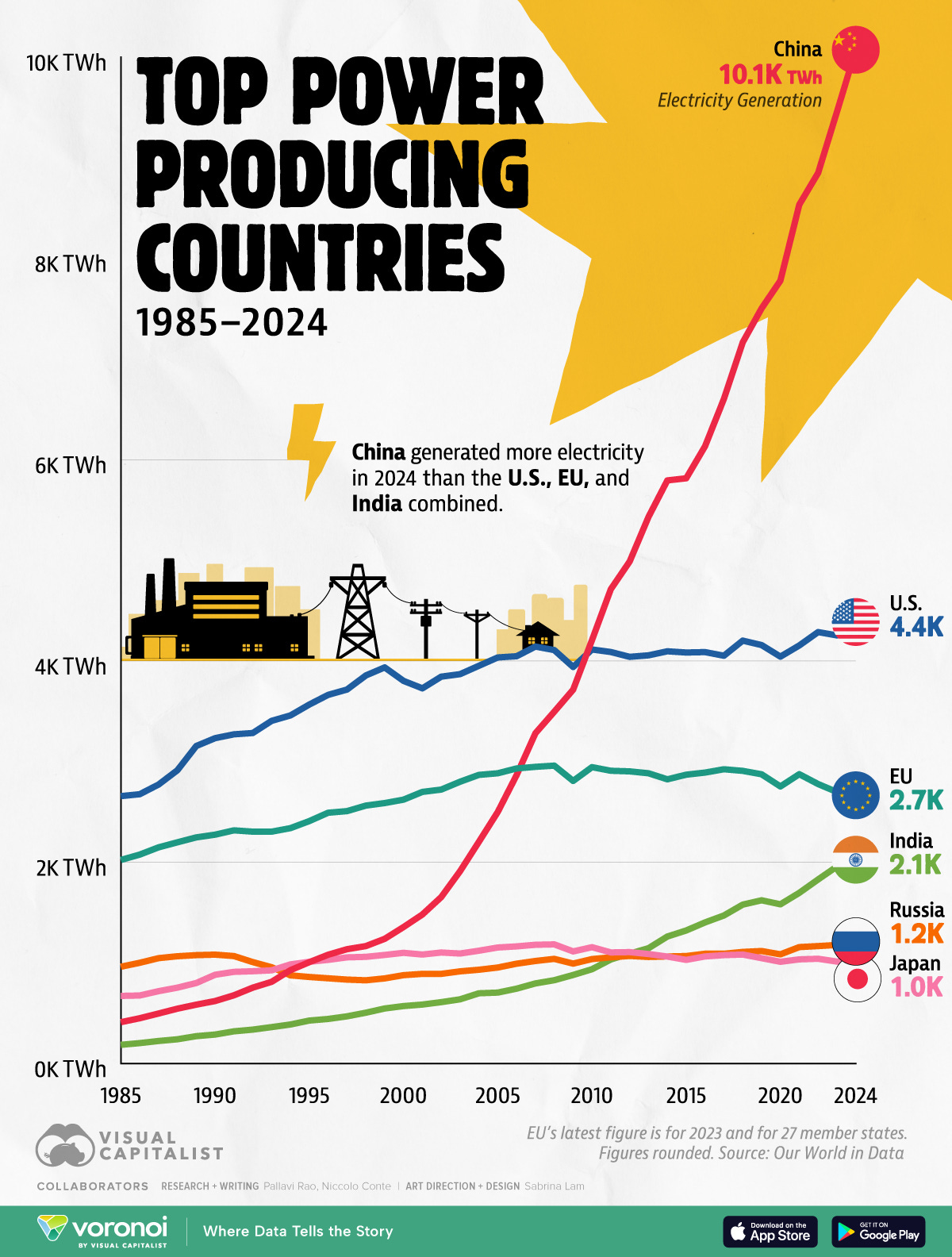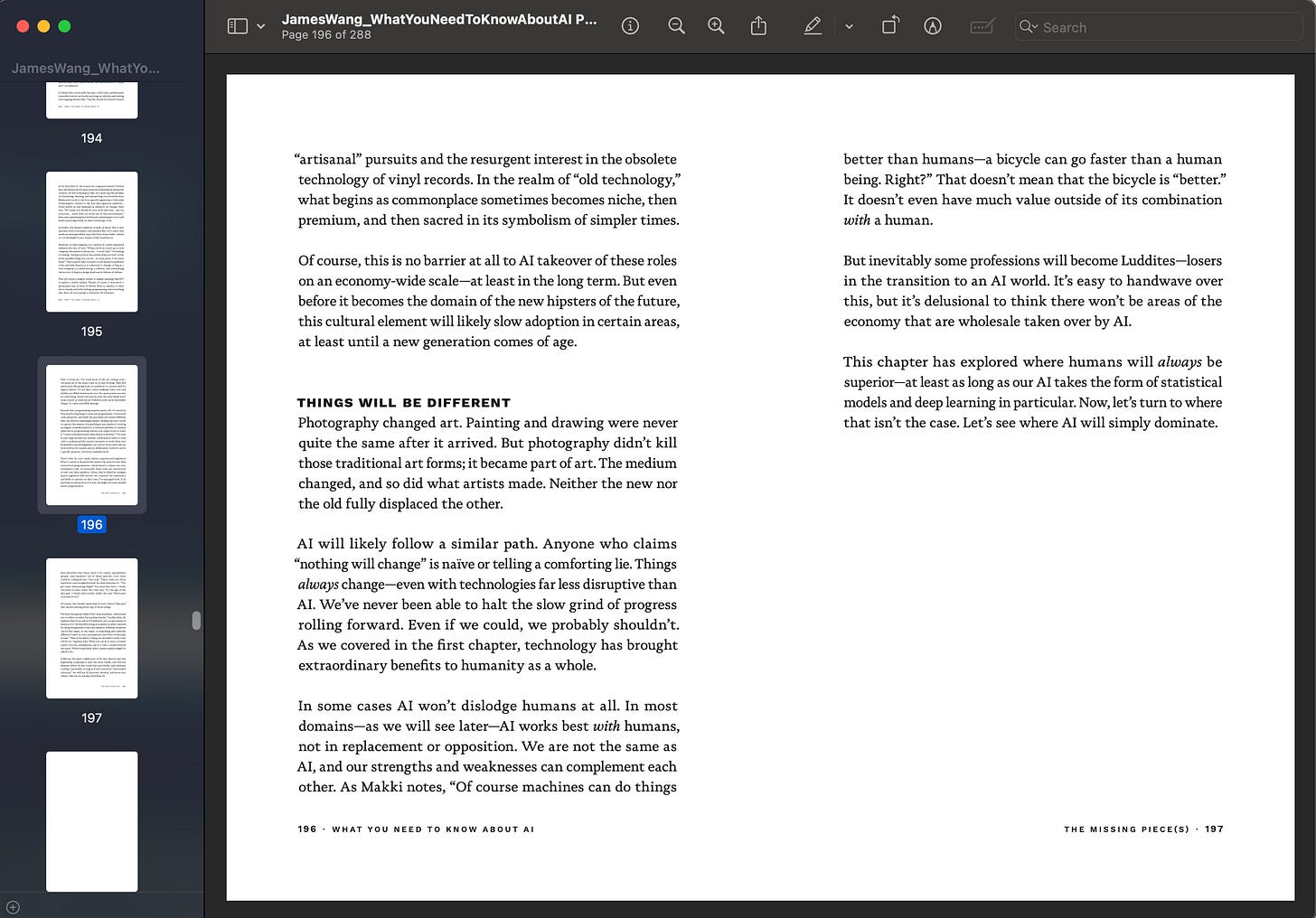AI is Not a Fad
Ubiquitous AI and its Impact on the Real World
How many industries are computerized? I don’t mean fully automated. I mean it in the old sense of the term: what industries use computers?
It’s difficult to imagine any industry in this day and age that doesn’t use computers. Even the most technologically resistant, like construction, still use computers to send emails, compose invoices, or make schedules with spreadsheets—and, in certain areas, the industry uses full-on BIM (building information modeling).
Given that many of the simplest devices are now “smart” with their own microcontrollers or internet-connected, there’s not much point in asking whether or not any specific industry uses computers. In the same way, we don’t really ask if industries use software, or databases, or—more recently—the internet.
All of these technologies have integrated into every industry. There’s no reason to expect AI to be any different. In fact, it has been gaining adoption faster than past technologies.

However, the adoption of AI across industries is still in its early stages. While the rate of growth has been fast, the total penetration of AI usage in US industries is around 10% or less so far.
We don’t tend to be in the camp of “AI will solve everything” and are far from believers that we’re right around the corner from AGI. That doesn’t mean we think the impact will be minor, however.
Valuations Don’t Reflect Fad or Not
James recently shared in his piece on the US AI Action Plan:
Early internet commentators predicted that a plethora of blogs would dominate the world or create a decentralized utopia. It would have been unimaginable in the late 1990s that the world would get centralized into walled gardens like the social media platforms and have a single search engine be the “home page” of the internet.
That home page—Google, in case it wasn’t obvious—is now under threat by AI. Why go to Google when you can just “ChatGPT” it?
There are many different changes that had to happen to make Webvan a laughingstock of a business after the dot-com bust and Instacart a $13 billion business as of July 2025.
That included smartphones, better mobile connectivity, and more. What will the future bring to AI? It’s still too early to say.
It’s important to remember that Google and Amazon existed before the dot-com bust. While they certainly weren’t “no name” companies by any means, they only achieved their incredible market strength (and valuations) in the years after the bust.
I was at an event recently where an early internet entrepreneur shared how many companies at the height of the boom could simply register a domain and basically raise a round—or even IPO. Financial manias create insane valuations that eventually have to come back to earth. And they will. But that doesn’t make the changes and value created by the boom any less real.
Among the Fortune 50, there are “old economy” names like Walmart, AT&T, and ExxonMobil—which were on there in the 1990s. Names like Amazon, Alphabet, and Meta—internet companies—are now up there too, a fact so obvious that it seems silly to even mention it.
Webvan obviously isn’t up there, but Instacart ($CART) is public and exists.
Just because we might have a bubble in valuations in most AI companies—one worry we have is many companies that have scaled rapidly in revenue can just as easily de-scale in revenue with faster-than-ever competition—doesn’t mean the Fortune 50 in a decade or two won’t similarly feature massive AI companies.
Real-World AI is a Huge Opportunity
What does Creative Ventures consider real-world AI, and why do we care about it?
“Picks-and-shovels” of AI. Not all AI companies will survive and thrive. In fact, if the internet boom is anything to go by, very few will do so. They will buy a lot of Nvidia chips, though. And similarly, we will need new cooling, energy storage, and interconnect systems to power the AI boom. That will be required, regardless of who ultimately wins.
AI applications with proprietary data. Our framework for what all modern AI is composed of is Models, Compute, and Data. Among these, everyone tends to use the same or similar models, everyone tends to use Nvidia/CUDA, and for LLMs, everyone tends to have mined the same internet data. That isn’t necessarily true elsewhere, however, especially with data. As models get better and better, they may need less data, but they still need it.
Nvidia has been doing a good job with continuing the pace of innovation—and squeezing the market—but there are other dimensions of scaling hardware. China, with its restrictions on AI chips, has been making this quite clear.
As per Grace Shao at AI Proem:
Huawei is compensating for its less powerful individual processors by deploying many more of them and leveraging a highly scalable, high-bandwidth optical interconnect architecture. And though it requires more space and energy to power the compute, this has not been a constraint for Huawei. This approach has temporarily now made CloudMatrix a viable alternative in China (likely domestic demand is so high that exporting this will not be a priority in the short-term) where Nvidia's cutting-edge GPUs are restricted or unavailable, despite higher costs and energy use. (Source)
The now-famous chart of energy production (in a lot of forms, but it became social-media viral for a while):
The US is “ok” at building renewable energy at this point—but it has been next to impossible to build new nuclear plants. That’s why Microsoft and Meta have been trying to restart decommissioned ones.
In the meantime, if one can get utility-scale battery storage (stationary batteries) up and running, it could convert much of the US’s ability and willingness to deploy renewable energy sources into something closer to “base load” with the ability to provide constant power.
These opportunities constitute the “picks and shovels” of AI, even while new applications of AI within areas like world models for robotics, drug discovery, and materials engineering represent incredible potential to transform our physical world.

This isn’t even getting into the potential of coding tools like Claude Code and various RAG platforms massively increasing broader software development speed—which is a bottleneck for a surprisingly large number of deep tech applications. We don’t necessarily think these productivity gains can be easily value-captured by model companies (because there are too many with strong performance, including ones based on open-source models like Qwen3-Coder), but it will be a factor in accelerating the pace of our world.
Although many hyped applications of AI may strike some as fanciful—and reminiscent of the dot-com bubble—it’s important to remember that, in the end, the internet did transform everything. AI is likely to do the same.
Portfolio News
C.Light Technologies received its CPT code (1010T).
This is a great step forward in helping the company get reimbursed by insurance for its revolutionary technology that aims to non-invasively detect and track neurodegenerative disease.
AM Batteries unveils a 3,500-square-foot lab in Massachusetts for reshoring battery manufacturing
As per the company:
Located in Billerica, our 3,500 sq ft dry-room lab provides battery manufacturers and material suppliers a hands-on environment to test new chemistries, qualify materials, and accelerate commercialization—all while supporting job creation and clean energy innovation here in Massachusetts.
Creative Updates
James’s book is available in October 2025
James’s book, What You Need to Know About AI, is now fully copyedited, proofread, and finished with layout. It’s now in the final stages of cover editing before being sent out to the printers.
We know a lot of you have been waiting for it—we’ll keep you updated as it becomes available on major platforms soon!
Predicting the Future?
Take a look at one of James’s other recent writings on GPT-5 and macro predictions about AI. Let us know if you agree or disagree with various conclusions!









